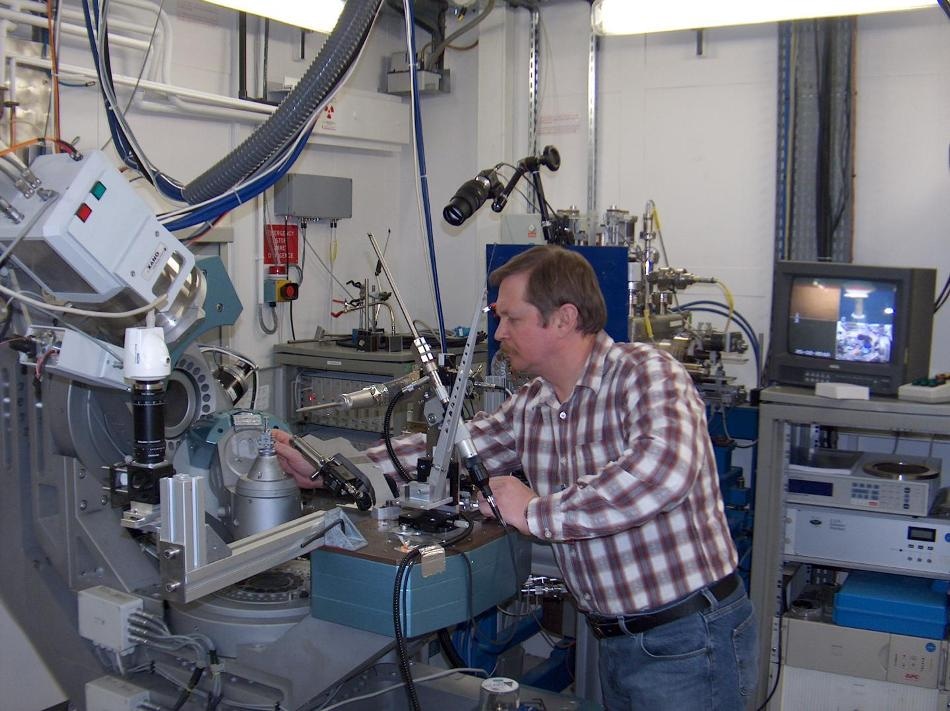Jul 10 2019
Researchers from Peter the Great St. Petersburg Polytechnic University (SPbPU) created multifunctional metal alloys that release and absorb heat simultaneously and transform in volume and size under the impact of a magnetic field.
 International scientific group developed multifunctional metal alloys that emit and absorb heat at the same time and change their size and volume under the influence of a magnetic field. (Image credit: Peter the Great St. Petersburg Polytechnic University)
International scientific group developed multifunctional metal alloys that emit and absorb heat at the same time and change their size and volume under the influence of a magnetic field. (Image credit: Peter the Great St. Petersburg Polytechnic University)
This effect is due to the modifications in the structure of the substance. The alloys may be employed in industry and medicine. The outcomes of the research were reported in the Key Engineering Materials journal. The project was performed as a part of the state assignments of the Federal Agency for Scientific Organizations and the Ministry of Education and Science of the Russian Federation and was supported by the Russian Foundation for Basic Research.
Upon magnetization, particular bodies change in volume and linear dimensions. This phenomenon is known as magnetostriction. The shape modifications are dependent on the properties of the magnetic field as well as on the substance structure.
The largest modifications typically take place in strong magnetic materials like iron, nickel, and cobalt oxide alloys. However, the magnetic properties of rare metals need further research and are currently of significant interest.
A group of researchers from Peter the Great St. Petersburg Polytechnic University determined the combination of components in an alloy that would enable heat absorption and emission and shape and size modifications within a broad range of temperatures comprising those close to human body temperature.
In an alloy of this type, terbium, dysprosium, gadolinium, and cobalt must be blended in the ratio of 0.2:0.8-x:x:2, and aluminum should be added to them to obtain the ratio of 0.2:0.8-x:x:0.9:0.1 (where x is a variable). The alloys were produced in the Institute of Electrical Engineering at Leibniz University Hannover.
The resultant material may be employed to create magnetostrictive transducers. They function as filters, sensors, and resonators that convert the magnetic field into mechanical oscillations and vice versa. This is a vital function for a variety of devices, for example, material integrity controllers that help detect air bubbles within constructions.
If such bubbles are not detected and eliminated, they may result in cracks and damage. Furthermore, a transducer can act as a foundation for creating sensitive vibration gauges used to register earthquake shocks, as well as a source and a receiver of sound waves for underwater jobs.
A group of experts from the Institute of Metallurgy and Material Science of the Russian Academy of Sciences investigated the impact of the magnetic field on the alloy. A thin needle that can detect every mount or indent was used to probe the surface of the substance.
The system operated more like a phonograph but the data was changed into an image rather than music. The researchers showed that the surface of the alloy is covered in stripes and that their layout modifications under the impact of the magnetic field. Therefore, they could observe the restructuring of the metal that describes the magnetostriction effect.
Transducers based on our alloys are going to be more durable and long-lasting than the existing analogs and will work in a wide range of magnetic fields. Moreover, the alloys may be used in medicine as they can change their shape under the influence of magnetic fields that are safe for human health.
Alexey Filimonov, Head of the Department of Physical Electronics, Peter the Great St. Petersburg Polytechnic University
Filimonov added, “For example, one can develop arterial stents that would flow in the bloodstream in a compact form and then unfold in a given place. This is possible because the operating temperature range of our materials is close to human body temperature.”